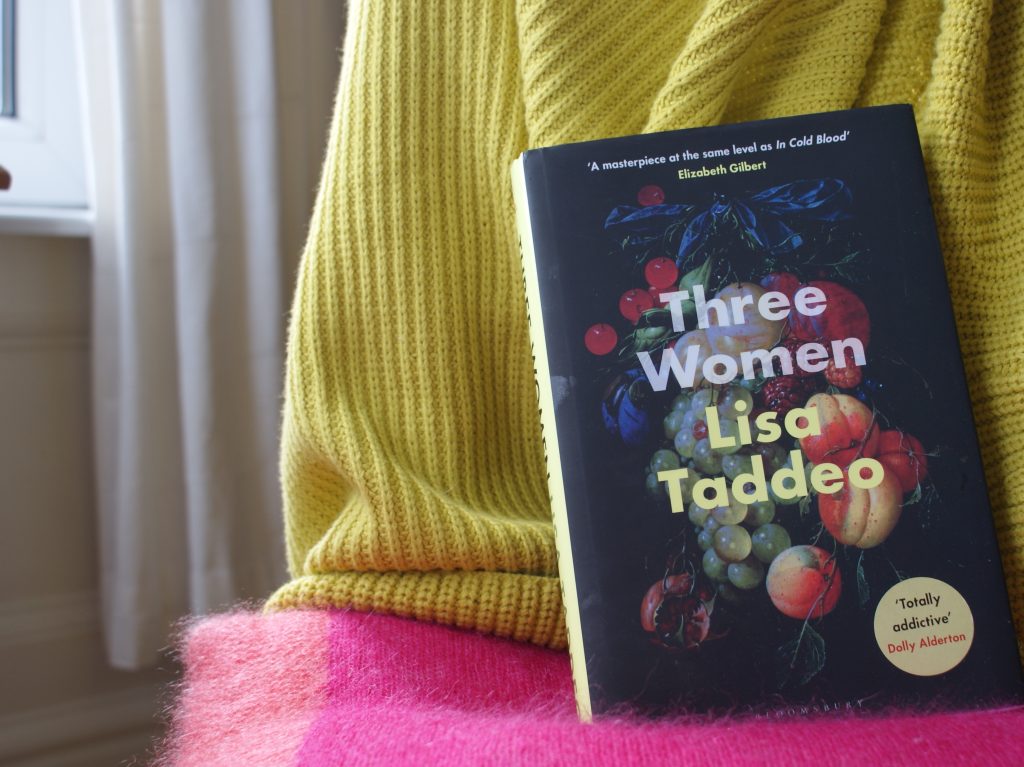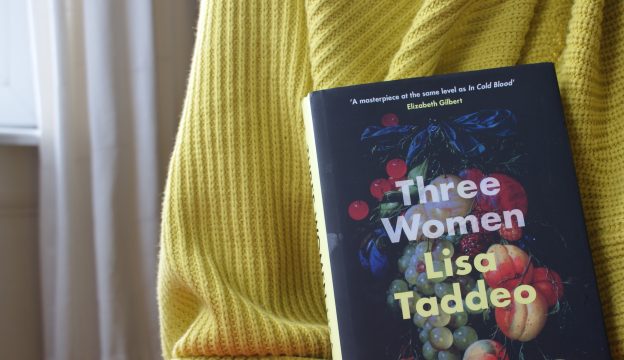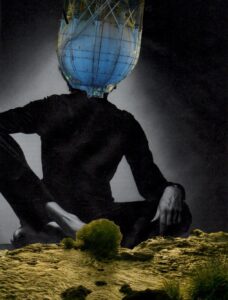One by one, Lisa Taddeo introduces her protagonists in Three Women: Maggie, Lina and Sloane, three women in the United States. Taddeo spent eight years travelling across America, dutifully recording their stories, and in doing so she attempts to portray a spectrum of white, heterosexual female desire. Or perhaps it is more accurate to say that she exposes a voice that has always been beneath the surface, but in the shadow of larger dialogues of feminism, domesticity and oppression: the narrative of straight women living in patriarchy and confronting the complexities of female identity.
Maggie is in her twenties, Lina her thirties and Sloane her forties, and all three have complex relationships with sex and the men they sleep with. Maggie had a relationship with her high school teacher when she was seventeen, Lena was trapped in a sterile marriage and satisfied her desires in an affair, Sloane’s husband likes to watch her have sex with other people. One wants to be listened to, one wants to be desired, and the other wants admiration absent of objectification.
Taddeo explores their indulgences and expulsions, and investigates how they have been affected by the actions of the men in their lives. “Throughout history, men have broken women’s hearts in a particular way,” she writes. “They love and then grow weary and spend weeks and months extricating themselves soundlessly, pulling their tails back into their doorways, drying themselves off, and never calling again.” While men’s stories are so often recognized throughout literary history, it is women’s stories that are laid bare in Three Women. Their motivations, their secrets and their desires overwhelm the narrative, while the men of the book are empty —they are like husks: male sexuality is disregarded, simplified and pales in comparison to the women.
Taddeo’s visceral depictions of sex—the good, the bad, and all in-between—find sexuality to exist somewhere between two opposing poles. Ephemeral and painful, wanting and needing, the extremes of both life and death. In this space, desire will take these three women one way or another—towards enlightenment or despair. This is most clearly explored within the concept of la petit mort: “When the French called the orgasm la petit mort they meant a happy little death, a satisfied death; this is not that. This is a fearful death.”
Orgasms are expressed at times as joyous, and at others as fatalistic endings. Maggie describes the first time a man made her come as “the death knell of her week, month, life. The end, though it murders her, is more euphoric than the start.” Sex is like heartbreak, and its climax leaves Maggie feeling simultaneously thrilled and lobotomised. Lina, on the other hand, experiences a kind of starvation in love: she eats less the more she loves. Her sexual identity is intrinsically linked to body image, a consequence of internalized misogyny. As she loses weight, Lina feels more confident and arguably more entitled to the sex she feels deprived of in her marriage. She has achieved what society has expected of a woman—to be desirable —yet she does not reap the rewards. But, when she embarks on her affair, love “feeds and eviscerates” her all at once. When she has sex, Lina feels as though she could die in that moment, “that if she did her life would be complete.” Death is woven throughout their stories—when Sloane first sees her husband having sex with another woman, which she consented to, she cannot help but powerfully react: “That she felt the warmth even at watching her husband with the other woman—except of course for the several moments when she felt she might die.”
Half way through the book I was looking for more impact. Taddeo was simply depicting events in these women’s lives, one after the other, which were undeniably well-written and engaging, but at the same time, there were missed opportunities. Simply saying what happened is essentially hollow; as a reader, I wanted to know why it matters, and why Taddeo chose to include it. In a similar vein, there were some narrative tactics that fell short. For example, Lina’s therapy group discussions often appear in her chapters, but they seemingly lead nowhere and have little effect on Lina’s decisions and understanding of her experience. These groups were merely another, but unnecessary, audience. By the final third of Three Women, only when Maggie, Lina, and Sloane’s lives begin to disintegrate amidst the fallout of their desire, we witness the repercussions women must face when pursuing love and sex. Each woman exhibits self-destructive behavior that is tied to their sexuality—commonly through excess or deprivation. Maggie numbs her pain through drinking and meaningless sex, as well as self-harming habits: “she wears fake nails so it’s harder to pull out her own eyelashes.” Lina abuses her skin as a result of her sexual frustration, “she’s been picking her face a lot. Nerves and anxiety and depression.” Sloane deprives herself of food, which she has done since she was a teenager: “This works, she thought, better than anything else in my life has ever worked. It felt easy, and even natural.”
Accompanying this self-harm is the abuse all three experienced when they were young. Maggie was sexually abused and groomed by a figure of authority, Lina was raped by three boys at a party when she was in high school, and Sloane recalls the moment when she was a child and her brother came into her room, asking if she’d like to “mess around.” Maggie puts it simply: “We don’t remember what we want to remember. We remember what we can’t forget.” Abuse and sex are connected. As this book was written during the #MeToo era, Taddeo handles the issues around consent with due care and compassion. Of the three tales, Maggie’s story is the most compelling and the most poignant in this regard.
Maggie’s narrative deviates between a recollection of the past and a present-day court case she has brought against her former teacher, Aaron Knodel. At seventeen years old she confided in her married teacher in an intimate and revealing letter, and from there their relationship grew. Only in hindsight does Maggie recognise him to be exploitative, but Taddeo takes care to explain what the affair meant to Maggie at the time—that she was not simply naïve, but living according her emotions, as all teenagers do. Maggie likens the “impossible romance” to Twilight, a young adult novel about a forbidden love between a teenage girl and a vampire. Knodel uses this fantasy to his advantage, as a means of justifying the secrecy of their relationship. He takes her copy and adorns it with notes and in doing so, solidifies himself as Maggie’s romantic hero: ‘“I wanted to be alone with my perpetual savior,’ Bella the human girl says of her vampire lover. A yellow tab beside it reads, ‘Is this how you feel about me?'”
Knodel uses chivalry against Maggie; for example, he says he wants to wait until she is eighteen to have intercourse, but at the same time he will commit to other sex acts that are equally intimate. Taddeo explores this hypocrisy again during the court case, she writes: “And now she has waited all these years, and because life has not gone her way and life has gone his way, she is angry, she is a used-up girl who wants money and retribution. This poor man, with his whole family and tract of lawn—she is going to take it from him. But then you see the notes.” “Imagine a girl, who has idealized a fairy-tale love story, reading notes effectively saying, Yes, yes, I am your vampire lover and you are my forbidden fruit. We are your favorite love story. For the rest of your life, nothing will taste like this. Can you imagine.”
Knodel is a dark, predatory figure. He exploits Maggie, manipulates her, and gaslights her into believing that the end of their relationship is her fault. He controls and abuses her until he finally leaves her, heartbroken and shamed. Maggie’s experiences are emotionally exhausting to read, but Taddeo is careful to maintain Maggie’s innocence. She writes: “Many people, men and women alike, who otherwise accepted Maggie’s truth, said to me, Well, she wanted it. She asked for it. But to me Maggie Wilken did not ask for it. She accepted it, the way any child accepts any decoration, any gift. Women have agency, but children do not. Maggie’s desire for love, for someone to tell her she was a valuable being in the world, was attacked, in the end, for its impudence.”
All three women describe the fantasy, the thrill, and the genuine love that accompanies sexual desire. But there is the inescapable truth that, in the end, the world will brutalize them for pursuing it. Taddeo confirms the injustices forced on women, and the difficulties that they face in their relationships with men in a patriarchal world. Yet, in among the inequality, there are moments of triumph. Lina in particular exalts in sexual pleasure, she is relatably and insatiably hungry. “Not having a partner, for Lina, was like slowly, quietly dying. Maybe Aiden wouldn’t do those things for her, maybe he would never leave his wife. Maybe none of the ways in which she gilded him were accurate. But Aiden made her veins hot. He made her feel like a girl and not part of the house.” Lina’s intimate moments are at once the most exquisite and the most desperate. She comes to embody the dichotomy that concludes Taddeo’s narrative, that these women “are the blood and bone and love and pain. Birth and death. Everything at once. And that, at last, is life.”
THREE WOMEN biography by LISA TADDEO published in hardback by BLOOMSBURY PUBLISHING July 2019. 320 pages

REBECCA GILROY reviewer
Rebecca Gilroy is a health editor and freelance journalist based in London.
© Copyright for all texts published in Stillpoint Magazine are held by the authors thereof, and for all visual artworks by the visual artists thereof, effective from the year of publication. Stillpoint Magazine holds copyright to all additional images, branding, design and supplementary texts across stillpointmag.org as well as in additional social media profiles, digital platforms and print materials. All rights reserved.



